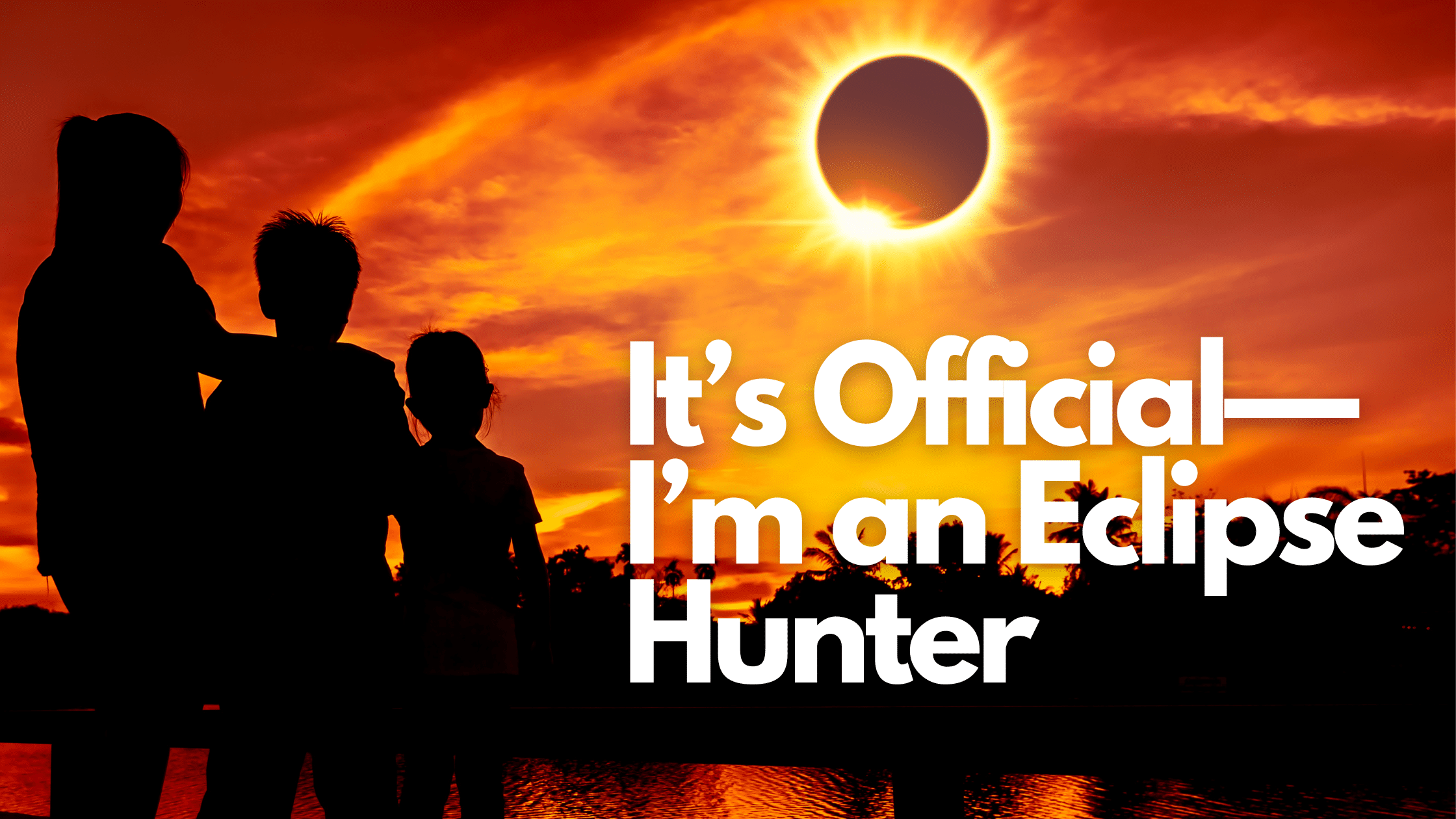
It’s Official—I’m an Eclipse Hunter
Eclipse Mania
Did you see the total solar eclipse that occurred on Monday, April 8, 2024? If not, I imagine you didn’t miss the countless articles on the subject. Editorials were in abundant supply prior to the eclipse such as here and here, and, of course, NASA has its own website dedicated to the cause with all kinds of interesting details.
Some publications went so far as to describe all the chatter as “Eclipse Mania.” Indiana even called for a state emergency due to a large influx of visitors coming to the state to view the eclipse. According to the Governor of the Hoosier state, this had the potential to overload communication and travel systems.
In this article on the Apologia blog site, we explained the scientific difference between a partial, annular, and total solar eclipse. We even made this FREE ebook available, which explains the eclipse phenomenon in more detail.
I remember hearing something about eclipses when I was young. It turns out a solar eclipse occurred before any of us were born on May 29, 1919, which helped prove Einstein’s theory of general relativity. The next solar eclipse to come our way will only cross one state, Alaska, on March 30, 2033, and only a few states will have the opportunity to witness an eclipse on August 23, 2044, when it crosses Montana, North Dakota, and South Dakota. So it’s no exaggeration to say a solar eclipse is a rare event.
What’s All the Hubbub?
I was fortunate to witness the eclipse in Columbia, South Carolina, in August 2017 and wrote about my observations in this list of top field trips where I ranked it as number one. You might be saying, “Enough already. I read all about the eclipse, and I’m happy to move on.” Well, I’m still a little jazzed about it all. So please don’t stop reading just because “astronomy isn’t your thing” or you “don’t get what all the hubbub has been about.”
When I asked people if they experienced the totality in 2017, some people said, “Yeah, I think so.” If you aren’t sure, then you did not. You would remember. At 99%, you can kind of see that the moon is covering the sun quite a bit, you put on some protective eyeglasses and say, “Huh, that’s cool.” Then you move on with your life after thirty seconds. The distinction between 99% and 100% coverage is significant and—quite frankly—astronomical. There are no words to explain the difference. I was so “wowed” by the experience in 2017 that I officially became what I call a dyed-in-the-wool “Eclipse Hunter.” Some might argue and say I’m actually an Umbraphile (Latin for “shadow lover”) — the name many give to eclipse enthusiasts. Personally, I prefer the term “Eclipse Hunter” because it sounds like a stronger competitor to the Storm Hunters who chase tornados.
During the three to four minutes of 100% totality, you don’t have to wear glasses. The disc of the moon blots out the sun but makes the corona of the sun’s perimeter visible. You are literally in the shadow of the moon as it passes in front of the sun. Your whole world goes dark in the middle of the day, the temperature drops noticeably, and people cheer. They are compelled to praise God because it is absolutely awe-inspiring. And there is no way to explain it to someone who hasn’t seen it before without sounding a bit crazy.
Eclipse Hunter
So, I did everything in my power to be in the path of totality for this recent total solar eclipse. To make this happen, Rachael and I traveled to Dallas, Texas and placed a blanket among a nice crowd on the grounds of the South Fork Ranch (think “Who shot J.R.?” from the 1980s television series “Dallas“).
Americans had the incredible opportunity to witness one of the most important global events of our lifetime. Millions traveled to behold the awe and wonder of God’s creation. There is no guarantee that a total solar eclipse will happen in a person’s lifetime, yet our generation has been afforded two of them in the last seven years.
I have traveled this incredible planet and seen many wonderful things: beautiful southwestern desert sunsets, the vast size and grandeur of the Grand Canyon, the sun rising and setting on the horizon of oceans, the highest mountains, the tallest trees, and the greenest valleys. Yet I am here to tell you that nothing—and I mean nothing—has compared to experiencing the total solar eclipses of 2017 and 2024.
It is an incredibly rare and beautiful thing that we were placed on a planet where this is even possible. God’s design is truly amazing—the diameters of the sun and moon (400:1 ratio) along with their distances from Earth (hmm…another 400:1 ratio) and the fact that all the orbits could ever align to make this happen is clearly a “God thing.” Of the many articles I read prior to April 8, this one is a good summary of how it points to the glory of God. A total solar eclipse is a wonder of Creation, and I’m glad to be among those who experienced these last two in person.
As a bonafide Eclipse Hunter—health permitting and Lord willing—I’ll be in Alaska nine years from now and in Montana eleven years later.
Creation-Based Resources for Your Homeschool
Spring 2024 New Products
Splash into savings with our new releases!

